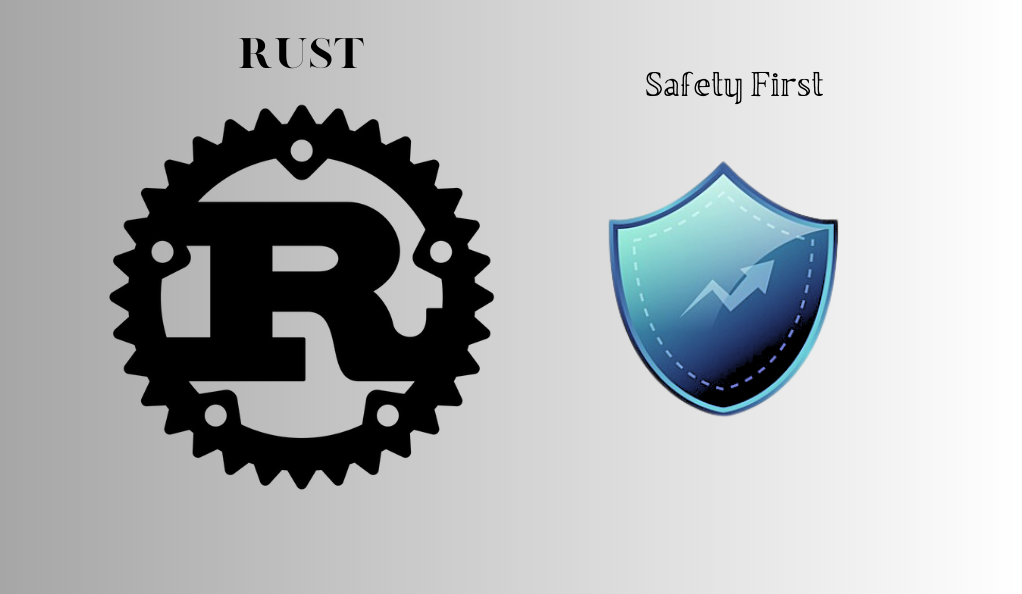The Rise of Rust: Why Developers are Flocking to This Systems Programming Language
In the dynamic realm of technology, programming languages frequently emerge, each touting superior performance, heightened safety, or intuitive syntax. Yet, only a handful truly revolutionize the developer landscape. Rust, a systems programming language, stands out as one such game-changer. Let’s delve into the reasons behind Rust’s soaring popularity among modern developers.
A Brief History
Rust’s inception can be traced back to 2010 when Mozilla introduced it to the world. For the initial years, it remained a relatively niche language, known only to a select few. However, the landscape shifted dramatically in 2015 with the release of Rust version 1.0. This milestone not only marked its maturity but also signaled its readiness for mainstream adoption. Since then, both individual developers and major tech corporations have been increasingly drawn to its capabilities.
The rise of Rust is not just a testament to its technical prowess but also to the timing of its emergence. As the tech world grappled with the challenges of concurrency and the need for safer systems programming, Rust appeared as a beacon, offering solutions that many developers hadn’t even realized they needed. Its growth trajectory since 2015 underscores the industry’s hunger for a language that could bridge the gap between safety and performance.
Safety First
Safety is at the heart of Rust’s design philosophy. The language’s unique ownership model is meticulously crafted to prevent pitfalls that plague many other languages. Issues like data races and null pointer dereferences, which are frequent sources of bugs and security vulnerabilities, are effectively mitigated by Rust. By addressing these challenges at the foundational level, Rust ensures that developers can write code that’s both safe and efficient.

Moreover, Rust’s commitment to safety doesn’t come at the expense of flexibility. Developers are not boxed into a corner; instead, they’re given the tools to write safe code, with the compiler acting as a guide. This proactive approach to safety drastically reduces the chances of software crashes or unpredictable behaviors, making Rust a reliable choice for critical applications, from operating systems to web servers.
Embracing Concurrency
In the modern computing era, where multicore processors are the norm, concurrency is indispensable. Rust recognizes this and offers robust support for concurrent programming. Its ownership model, coupled with a stringent type system, facilitates the creation of concurrent code that’s not just safe but also efficient. This is a significant achievement, especially considering the complexities and challenges associated with writing concurrent code in other languages.
The beauty of Rust’s approach to concurrency lies in its simplicity. Instead of introducing a myriad of complex constructs or relying heavily on developer discipline, Rust’s language features inherently steer developers towards safe concurrent practices. With Rust, developers can harness the full power of modern hardware without compromising on safety or performance, making it a future-proof choice in an increasingly parallel computing world.
Performance Matters
Rust is synonymous with speed. Unlike some languages that interpret code at runtime, Rust compiles directly to machine code, ensuring optimal performance. But it doesn’t stop there. The absence of garbage collection in Rust, combined with its rigorous type system, allows the generation of highly optimized code. This often results in Rust outperforming other languages in various benchmarks.
Beyond raw speed, Rust offers predictable performance. This predictability is crucial for systems where consistent response times are essential, such as real-time systems or high-frequency trading platforms. Developers can fine-tune their Rust applications, confident that the language won’t introduce unexpected latencies. For industries where performance isn’t just a luxury but a necessity, Rust stands out as a top contender.
User-Friendly by Design
At first glance, Rust might seem like a language built for hardcore systems programmers. However, its design is surprisingly user-friendly. Drawing inspiration from C++, Rust’s syntax feels familiar to many developers, making the transition smoother. Beyond the syntax, Rust boasts a rapidly growing ecosystem. A plethora of libraries and tools are available, simplifying the process of building intricate systems.

Additionally, the Rust community plays a pivotal role in its user-friendly reputation. Active, welcoming, and always eager to help, the community has fostered an environment where both newcomers and seasoned developers can thrive. From detailed documentation to active forums and regular meetups, Rust enthusiasts ensure that everyone has the resources and support they need to succeed.
Industry Adoption
The tech world is no stranger to Rust’s prowess. Companies like Dropbox have seamlessly integrated Rust into their core infrastructure. They utilize its capabilities for mission-critical components, such as block storage and load balancing. Microsoft, a titan in the tech industry, has also embraced Rust. The company sees Rust as a tool to bolster the security and reliability of parts of Windows.
Such endorsements from industry leaders are not mere token gestures. They underscore Rust’s potential and its readiness for large-scale, real-world applications. As more companies experience the benefits of Rust firsthand, its adoption rate is set to accelerate, solidifying its position as a dominant force in the programming world.
Conclusion
Rust’s ascent in the programming world is a testament to its unparalleled combination of safety, speed, and user-friendliness. As it continues to gain traction, its influence on the future of software development is undeniable. For developers and companies aiming to stay at the forefront of technology, Rust offers a promising path forward, blending the best of the old with the innovations of the new.
FAQs
Rust was introduced by Mozilla in 2010. However, it remained relatively unknown until 2015 when version 1.0 was released. This release marked its maturity and signaled its readiness for mainstream adoption, leading to increased interest from both individual developers and major tech corporations.
Rust places a strong emphasis on safety. Its unique ownership model is designed to prevent common programming pitfalls, such as data races and null pointer dereferences. These issues, which often lead to bugs and security vulnerabilities in other languages, are effectively mitigated by Rust. Additionally, the Rust compiler guides developers in writing safe code, reducing the chances of software crashes or unpredictable behaviors.
Rust offers robust support for concurrent programming, which is essential for modern multicore processors. Its ownership model and stringent type system facilitate the creation of concurrent code that is both safe and efficient. Rust’s language features inherently steer developers towards safe concurrent practices, allowing them to fully utilize modern hardware without compromising on safety or performance.
Rust is known for its exceptional speed. It compiles directly to machine code, ensuring optimal performance. The absence of garbage collection and its rigorous type system allow Rust to generate highly optimized code. This often results in Rust outperforming other languages in various benchmarks. Moreover, Rust offers predictable performance, making it a preferred choice for systems requiring consistent response times.
Several tech giants have recognized and integrated Rust’s capabilities. For instance, Dropbox uses Rust for mission-critical components like block storage and load balancing. Microsoft has also embraced Rust, using it to enhance the security and reliability of parts of Windows. These endorsements highlight Rust’s potential for large-scale, real-world applications.
At bstash.io, our mission is to offer impartial and dependable information on cryptocurrency, finance, trading, and stocks. Nevertheless, we are unable to offer financial guidance and encourage users to conduct their own research and thorough investigations.
Read MoreRust, introduced by Mozilla in 2010, has emerged as a game-changer in the programming world. Renowned for its safety, performance, and user-friendliness, Rust is becoming the go-to choice for developers and tech giants alike.






